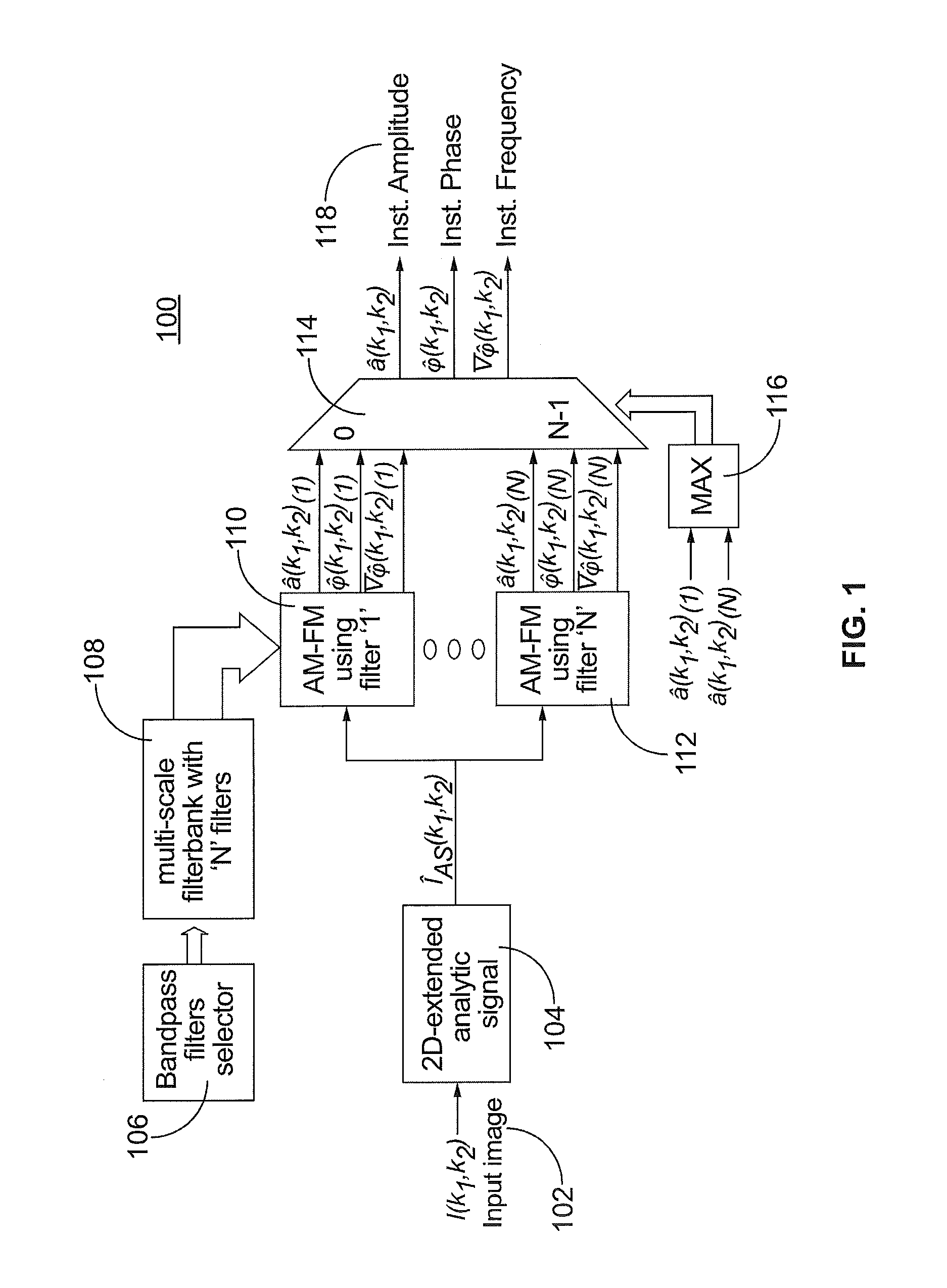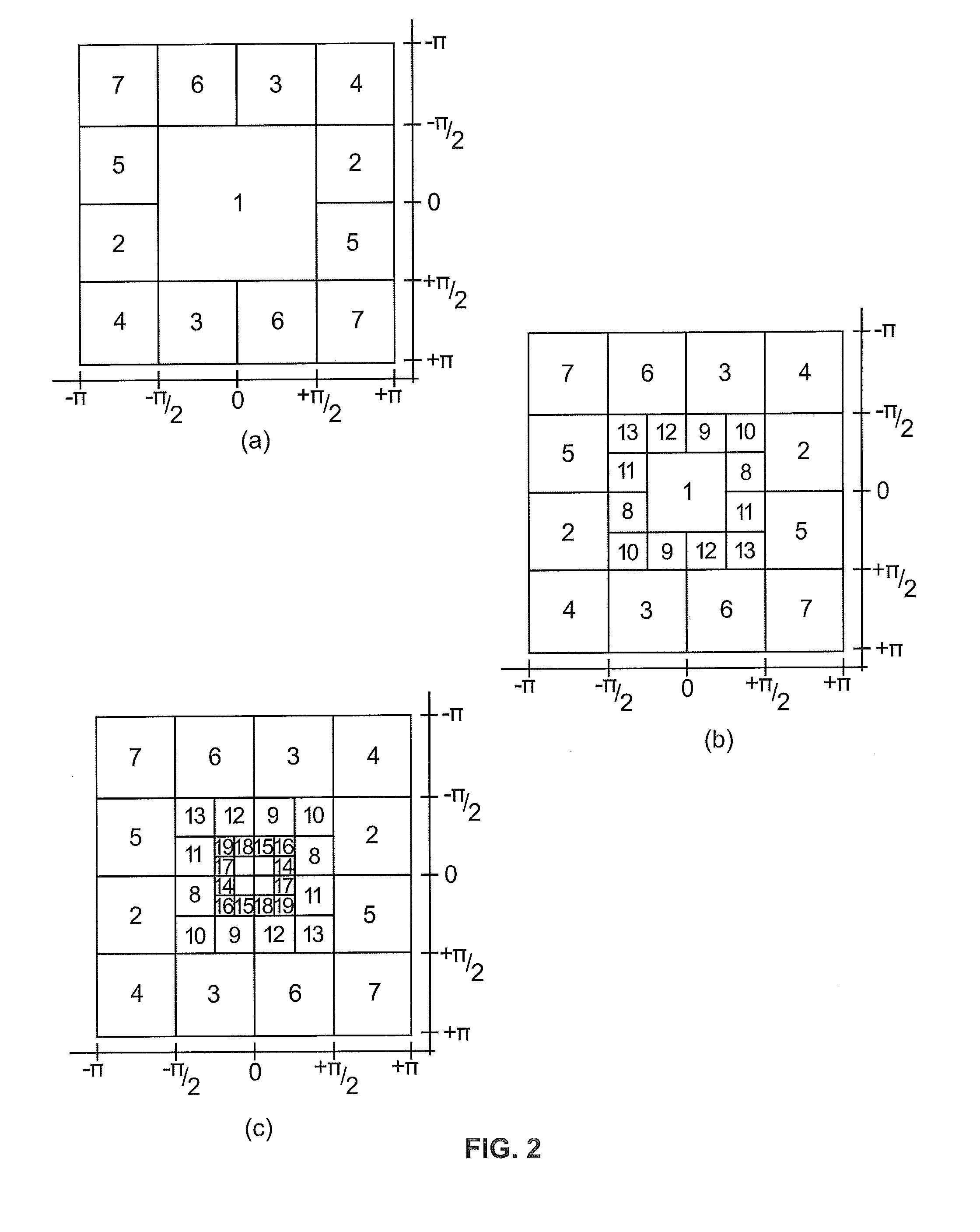System and methods of amplitude-modulation frequency-modulation (AM-FM) demodulation for image and video processing
a frequency modulation and amplitude modulation technology, applied in the field of image and video processing, can solve the problems that dwt does not measure frequency content directly, and cannot be effectively generalized to images and videos
- Summary
- Abstract
- Description
- Claims
- Application Information
AI Technical Summary
Benefits of technology
Problems solved by technology
Method used
Image
Examples
Embodiment Construction
[0064]FIG. 1 illustrates a block diagram of multi-scale AM-FM demodulation 100 according to the present invention, specifically illustrating estimation of a single AM-FM component from a single scale. For purposes of this application, the term “scale” is defined as a collection of bandpass filters. As an example, scales can be categorized into low, medium, and high based on frequency magnitude. As shown in FIG. 1, an input image I(k1,k2) is provided at 102. It is also contemplated that an input video may be provided as described further below. A two-dimensional extended analytic signal IAS(k1,k2) of the input image is computed at 104 by applying the Hilbert transform to form a 2D extension of the 1D analytic signal. For either an input image or input video, a multi-scale filterbank is selected at 106. A multi-scale filterbank is selected by defining the bandpass filters at 108 that correspond to each scale as described in further detail with respect to FIG. 2. The extended analytic ...
PUM
 Login to View More
Login to View More Abstract
Description
Claims
Application Information
 Login to View More
Login to View More - R&D
- Intellectual Property
- Life Sciences
- Materials
- Tech Scout
- Unparalleled Data Quality
- Higher Quality Content
- 60% Fewer Hallucinations
Browse by: Latest US Patents, China's latest patents, Technical Efficacy Thesaurus, Application Domain, Technology Topic, Popular Technical Reports.
© 2025 PatSnap. All rights reserved.Legal|Privacy policy|Modern Slavery Act Transparency Statement|Sitemap|About US| Contact US: help@patsnap.com



